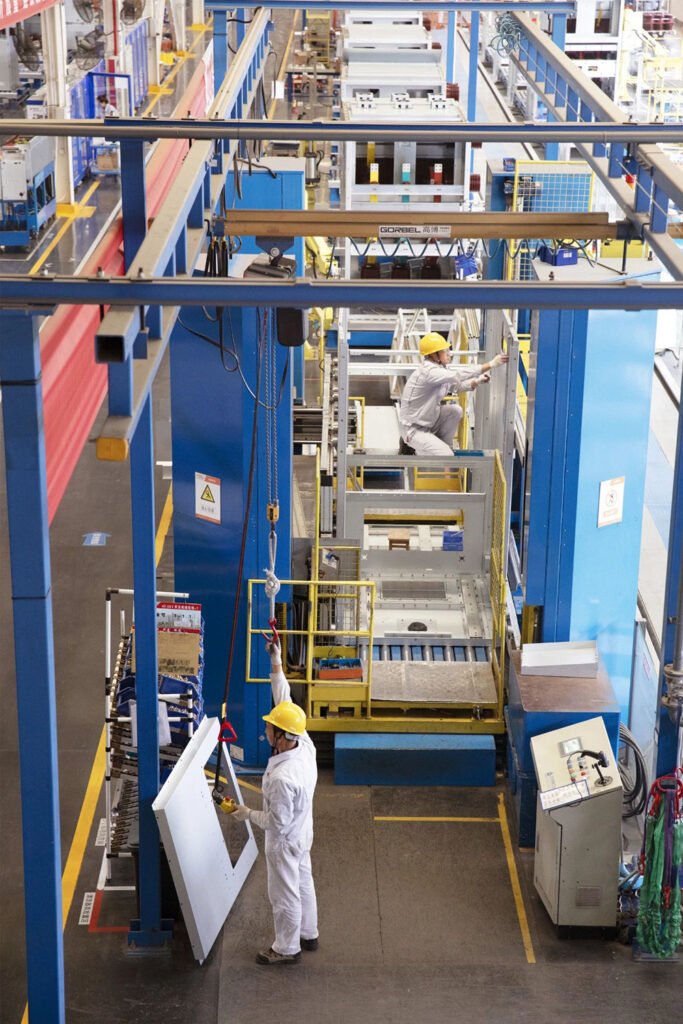Switchgear Cabinet Sheet Metal Fabrication and Assembly

The sheet metal fabrication and assembly of switchgear cabinets is a critical step in the manufacturing process, involving the combination of differently shaped and sized sheet metal pieces to form a complete cabinet structure.
- Design and Planning:
- Before starting the assembly, the shapes, sizes, and quantities of the sheet metal pieces are planned according to the design drawings and specifications provided by electrical engineers.
- Professional CAD software is used for 3D modeling to ensure the accuracy of all parts’ dimensions and positions.
- Material Preparation:
- The appropriate sheet metal material is selected, such as galvanized steel, stainless steel, or aluminum alloy, based on the cabinet’s intended environment and performance requirements.
- The material’s thickness and strength must meet the design requirements to ensure the cabinet’s durability and safety.
- Cutting and Shaping:
- Sheet metal materials are cut into the required shapes and sizes using shearing machines, laser cutters, or plasma cutters.
- Forming processes such as bending and punching are applied to the cut sheet metal pieces using bending machines, stamping presses, or other forming equipment.
- Assembly:
- The formed sheet metal pieces are assembled according to the predetermined design.
- Joining methods can include welding, riveting, or bolting, and the choice depends on the cabinet’s structural design and production efficiency considerations.
- Welding and Fixing:
- For welded joints, precise positioning and clamping are necessary to ensure the quality and strength of the welds.
- After welding, the welds are cleaned and smoothed to remove slag and spatter, ensuring a neat appearance.
- Surface Treatment:
- To improve the cabinet’s corrosion resistance and aesthetics, surface treatments such as painting, powder coating, or galvanizing are applied to the assembled cabinet.
- Surface treatments should be carried out in a dry, clean environment to prevent the attachment of dust and contaminants.
- Inspection and Testing:
- After the assembly and surface treatment, the cabinet is inspected for dimensions and structure to ensure compliance with design requirements.
- Necessary strength and durability tests, such as vibration and impact tests, are conducted to ensure the cabinet’s reliability.
- Installation of Internal Components:
- Once the cabinet structure is confirmed, internal electrical components such as circuit breakers, contactors, and relays are installed.
- Ensure all electrical connections are correct and perform necessary electrical tests.
